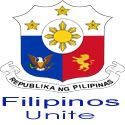Source: Manila Bulletin
Posted: October 08, 2009
Some people call it as the different media by which Generation Me perpetuates their obsession with themselves.
During the days when the country was ravaged by Typhoon Ondoy and worried about the uncertain path of Typhoon Pepeng, these very same sites proved not to be about selfishness, but about the selflessness of every young Filipino.
While Typhoon Ondoy flooded various parts of Metro Manila, one thing that was unexpected was how electricity and an Internet connection were still available in most parts of the metropolis. While mobile phone networks struggled with the volume of message and calls being sent, Facebook and Twitter emerged as quick and efficient ways to send across information.
Rather than updates about popular applications like Mafia Wars and Pet Society, most Facebook home pages instead featured a running update on where missing individuals were located or last seen, as well as providing information as to where help and relief goods were urgently needed.
It was also on Facebook that dramatic video of vehicles sinking in the flooding that ravaged the University of the East Ramon Magsaysay Memorial Medical Center in Sta. Mesa, Manila first surfaced, bringing home the destruction brought by Ondoy to those safely in their homes.
Just like Facebook, Twitter became a bulletin board of information, providing updates on passable roads and links to sites detailing how to salvage submerged cars, how to make engines work again, and how to claim insurance.
At the height of the flooding, Twitter was awash with updates on which volunteer organizations needed more manpower as well as pleas for security in areas like Provident Village in Marikina.
Twitter became such an essential tool for information gathering that even Defense Secretary and National Disaster Coordinating Council chair Gilbert Teodoro had to turn to his Twitter page to provide updates to the public.
The sites remain relevant even after the threat of Ondoy. Twitter and Facebook still find itself filled with information and updates on ongoing relief operations. The sites have also found themselves as a venue for expressing pride at how the people were able to pull themselves together and help each other out, when government proved to slow to respond. The image of “Where I’m from, everybody’s a hero” originated from blogging site Tumblr and quickly found itself disseminated among Facebook users.
If maturity is tested by the challenges one prevails over, then these sites – the instruments of Generation Me – have certainly come of age.







No comments:
Post a Comment